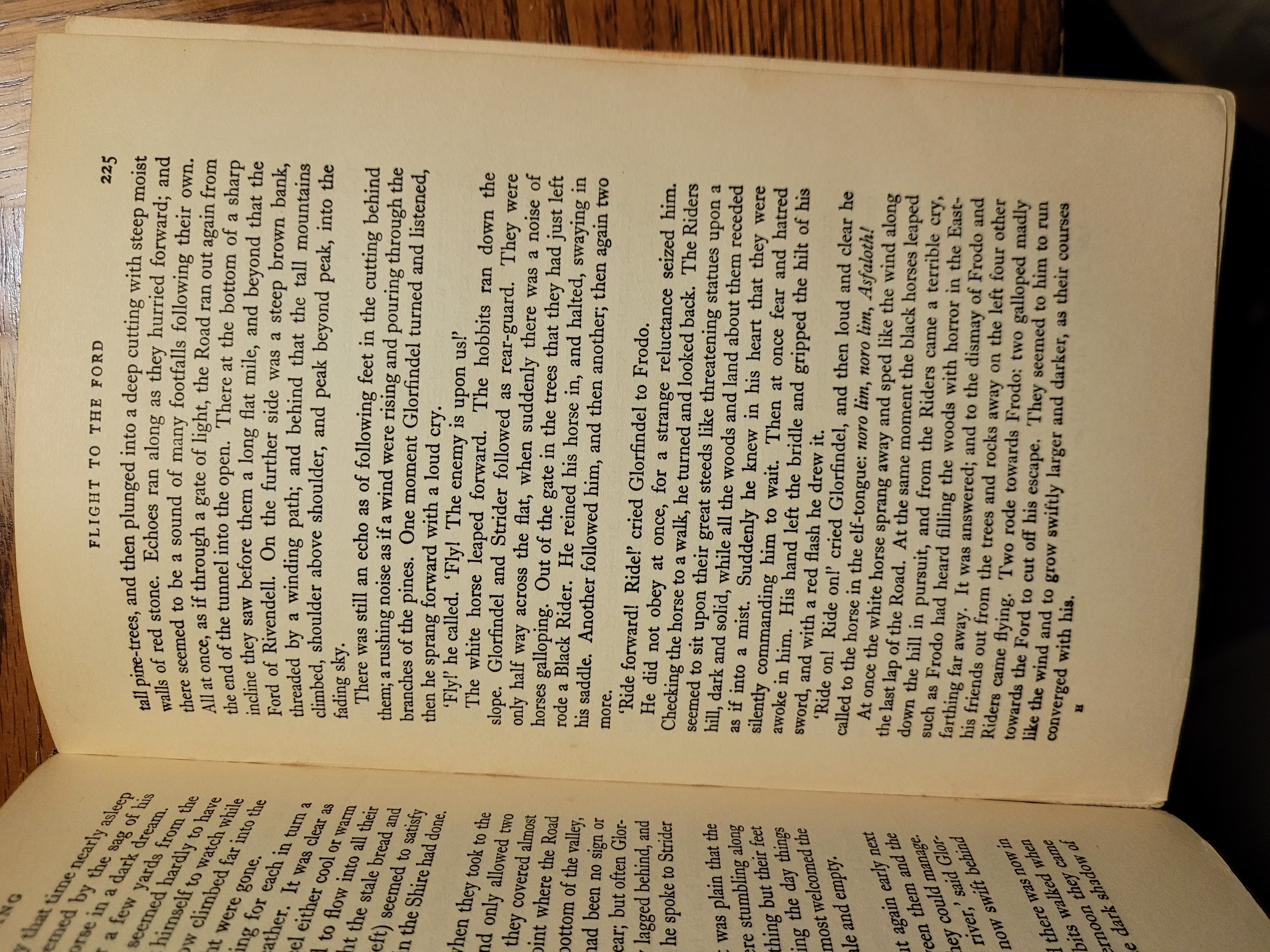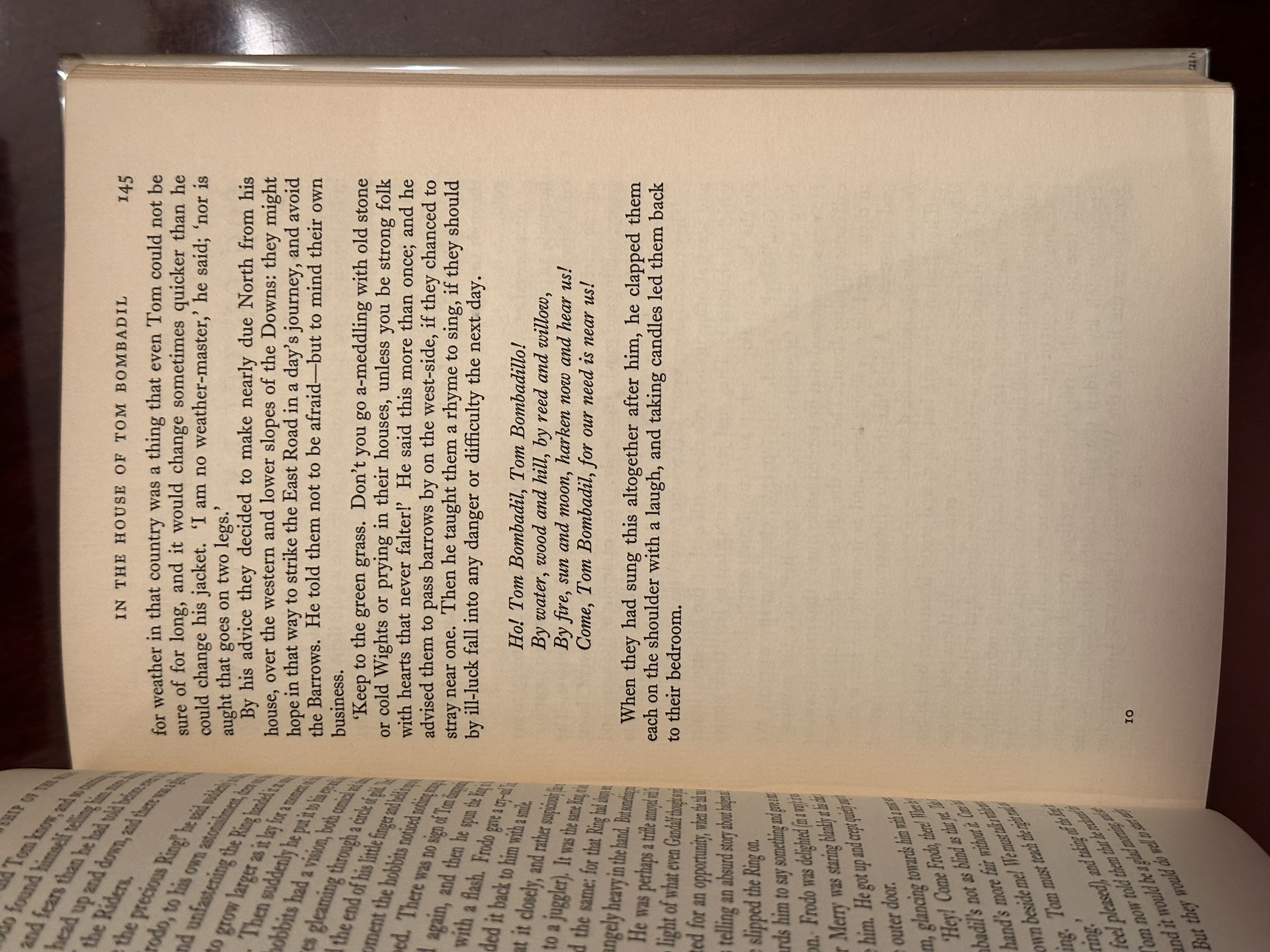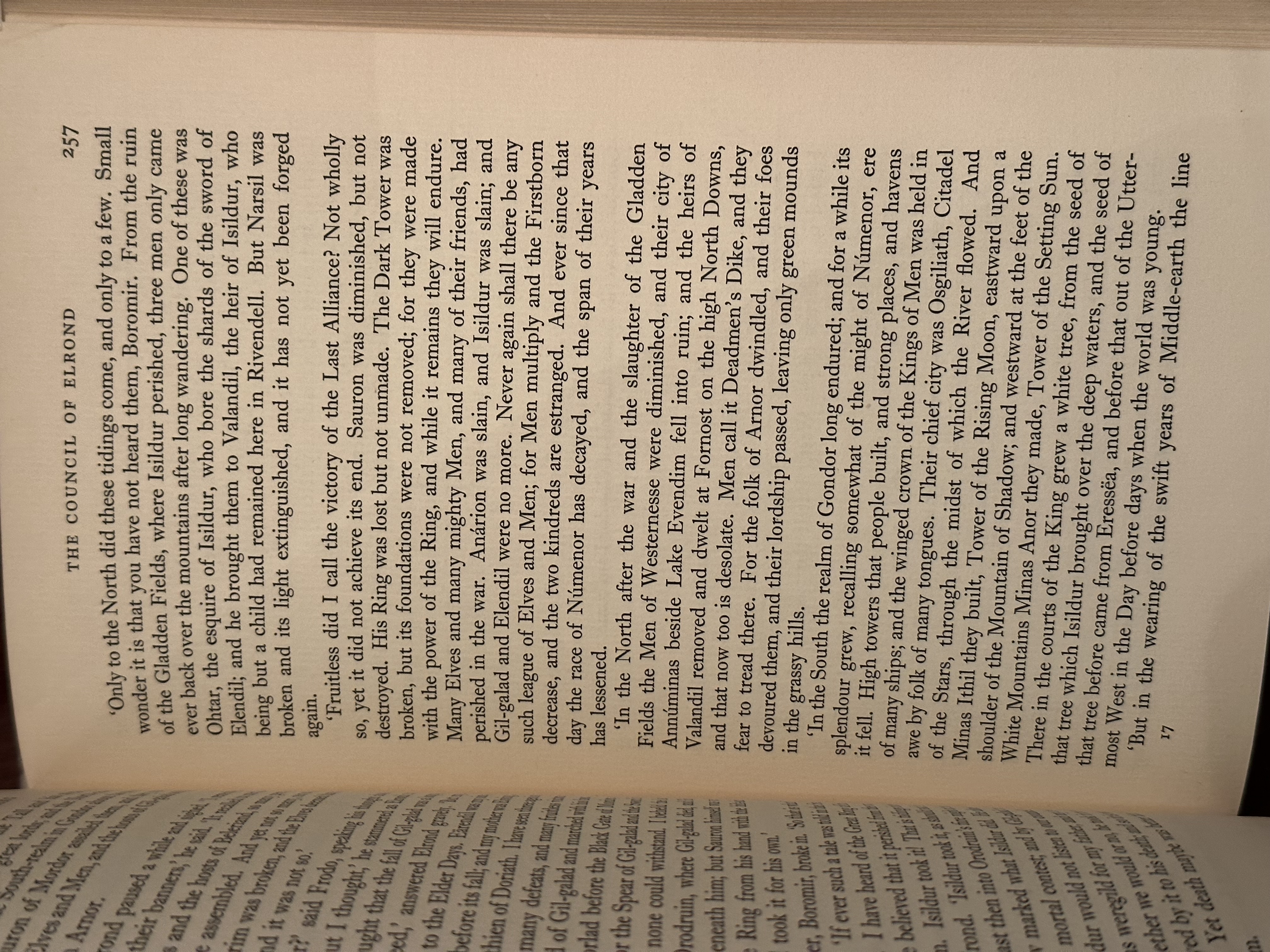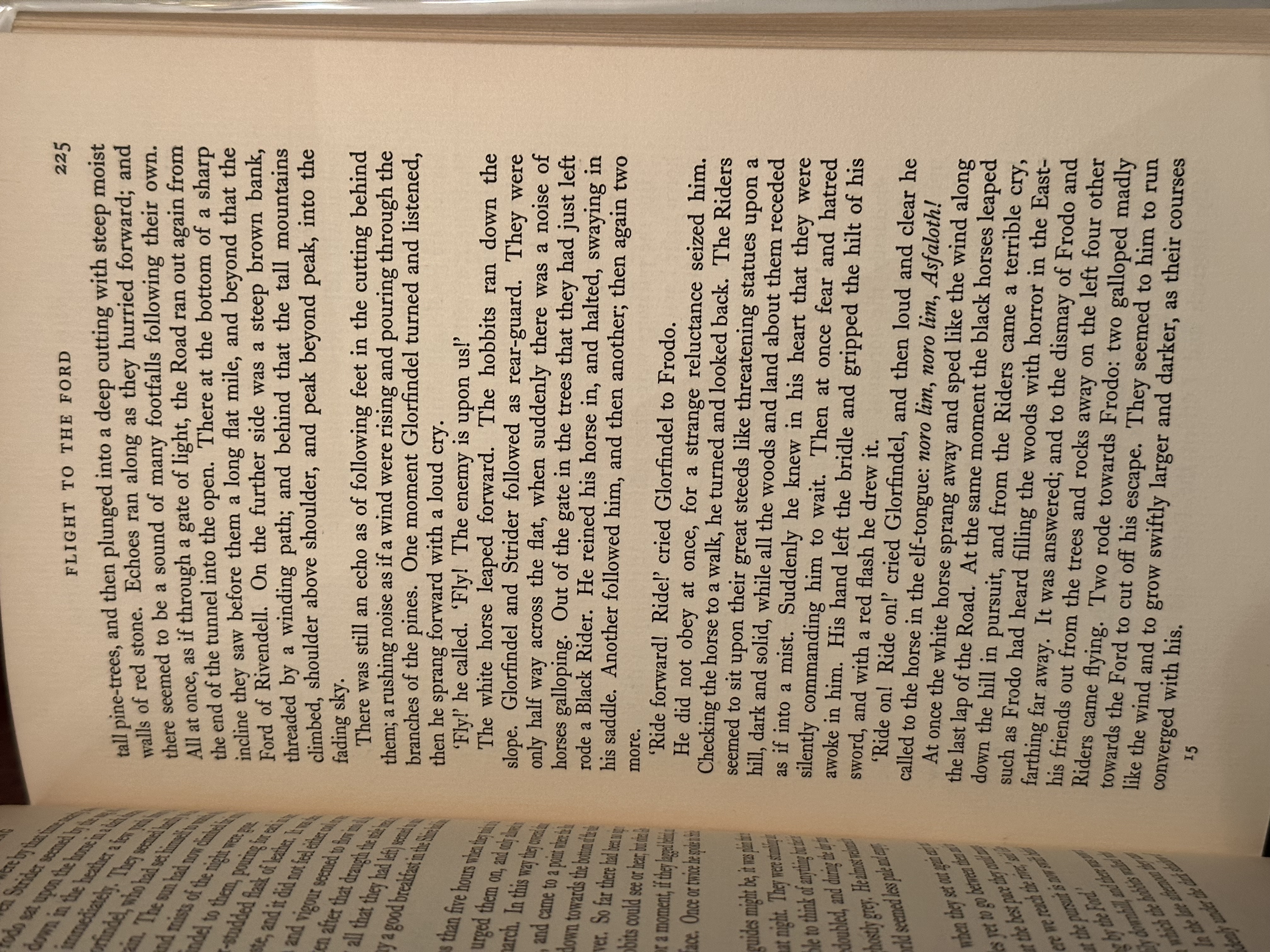Additional Characters
24 Sep, 2023
2023-9-24 10:04:48 AM UTC
2023-9-24 10:04:48 AM UTC
Does anyone have information on the additional characters sometime present on the lower portion of pages in a Houghton Mifflin, 1st edition of TFotR? I'm not aware of the year, but assume it is an early printing.
Thank You
Thank You




24 Sep, 2023
(edited)
2023-9-24 10:29:50 AM UTC
Edited by Trotter on 2023-9-24 10:34:56 AM UTC
Edited by Trotter on 2023-9-24 10:36:15 AM UTC
Edited by Trotter on 2023-9-24 10:36:15 AM UTC
2023-9-24 10:29:50 AM UTC
These are called signatures and are used to help the printers or book binders correctly place the pages into the book when it is bound.
https://eng244.wordpress.com/bookgloss/signature/
These are not really used for modern mass printed books as the binding is not done by hand, but still very useful for any cases where you would hand bind the pages.
Most of authors define signature as a figure, a number or a small capital letter placed by the compositor at the foot of the first page of every section of a book. It is placed below the text in the direction line of its first recto (right hand-page) and often repeated in sequence on further rectos.
It might be considered a first form of pagination. Signatures were first printed on books not for the readers but for people whose work was folding them. Books indeed were not printed leaf by leaf but on large sheets of paper containing a number of pages on each side, in a second moment these pages were folded up to make groups of leaves. The book binder had to fold up these leaves in the right order and in the right way up. For this reason each sheet was signed on the first page so that they could be arranged in alphabetical order. This sequence of symbols had three main functions (Glaister 445): to help the compositor, the warehouseman and the machine binding operator in their work of folding sheets and putting sections in the correct way.
Letters used as signature marks are from the Latin alphabet; these are twenty-three and do not include I, J, U or V because they were just variations of two already existent letters and there was no W too. This custom was derived from manuscripts and incunabula (which were books printed before 1501). Signatures are always printed in roman type in order not to be confused (Glaister 445).
https://eng244.wordpress.com/bookgloss/signature/
These are not really used for modern mass printed books as the binding is not done by hand, but still very useful for any cases where you would hand bind the pages.
Thanks Andrew, that is very interesting. None of the other Houghton Mifflin or UK 1st edition TFotR copies I have seem to have them.
So, I was pondering whether the signature marks disappeared at some point within the UK 1st Edition Impressions of the Fellowship. And they do. Signature marks are in the books up thru the 9th Impression (the one erroneously marked 8th) but disappear starting with the 10th Impression going forward.
That does (coincidentally?) line up with the transition of printers from Purnell to Jarrold.
That does (coincidentally?) line up with the transition of printers from Purnell to Jarrold.
It is explained in Frisby's articles:
FR: "the signature marks (which appeared through FR 1/9) are numbers in the Jarrold impressions, but small capitals in the Purnell impressions", "the first two impressions had signature marks every sixteen pages...The later FR impressions (through 1/9) had signature marks every thirty-two pages".
TT: "Both the Houghton Mifflin and Allen & Unwin first impressions have signature marks every 16 pages (beginning with a '2' on p. 17), while the second (and third) impressions have signature marks every 32 pages beginning with a ' 2' on p. 33. Signature marks were discontinued beginning with A&U TT 1/4."
RK: "signature marks were discontinued in RK after the second impression"
FR: "the signature marks (which appeared through FR 1/9) are numbers in the Jarrold impressions, but small capitals in the Purnell impressions", "the first two impressions had signature marks every sixteen pages...The later FR impressions (through 1/9) had signature marks every thirty-two pages".
TT: "Both the Houghton Mifflin and Allen & Unwin first impressions have signature marks every 16 pages (beginning with a '2' on p. 17), while the second (and third) impressions have signature marks every 32 pages beginning with a ' 2' on p. 33. Signature marks were discontinued beginning with A&U TT 1/4."
RK: "signature marks were discontinued in RK after the second impression"

















 46
46 4160
4160